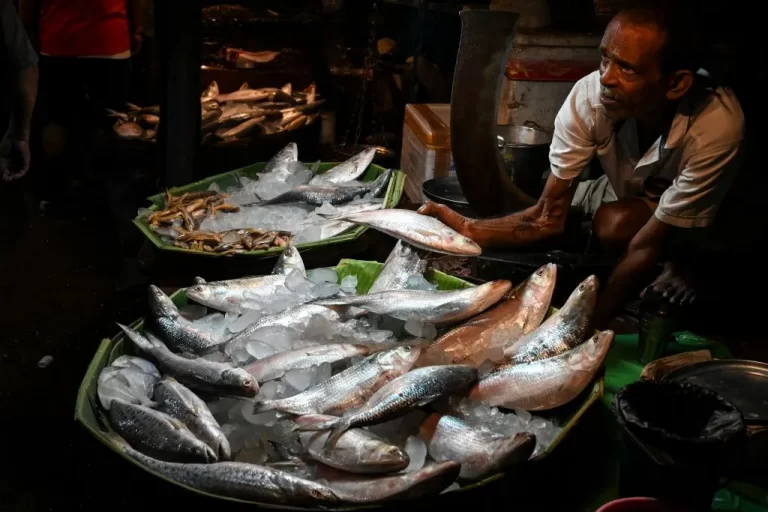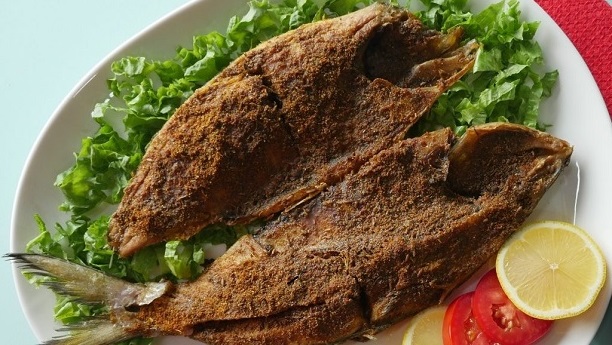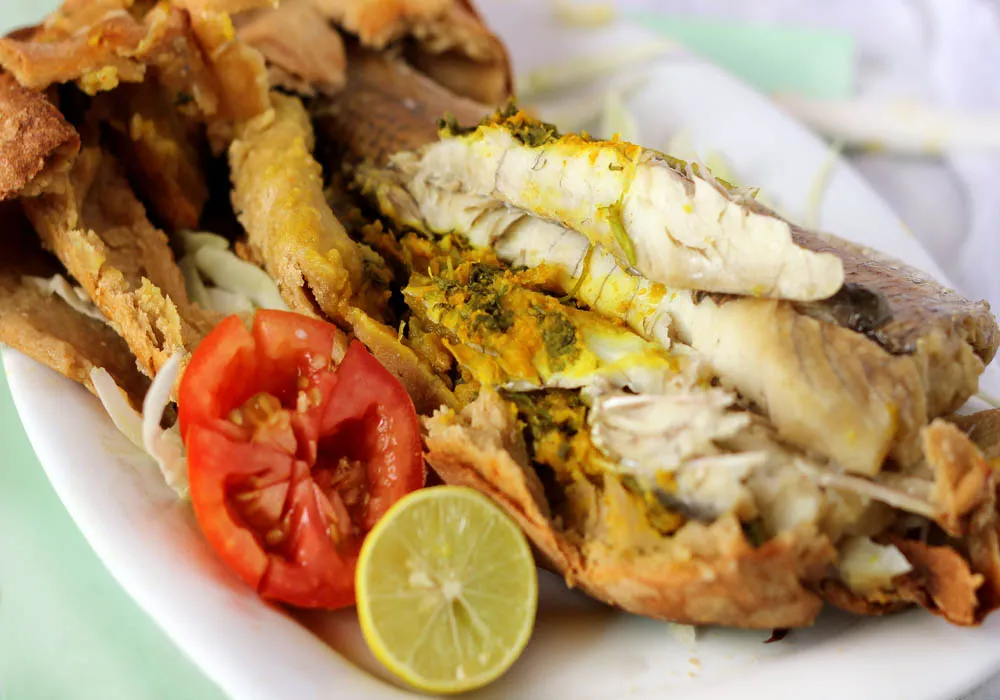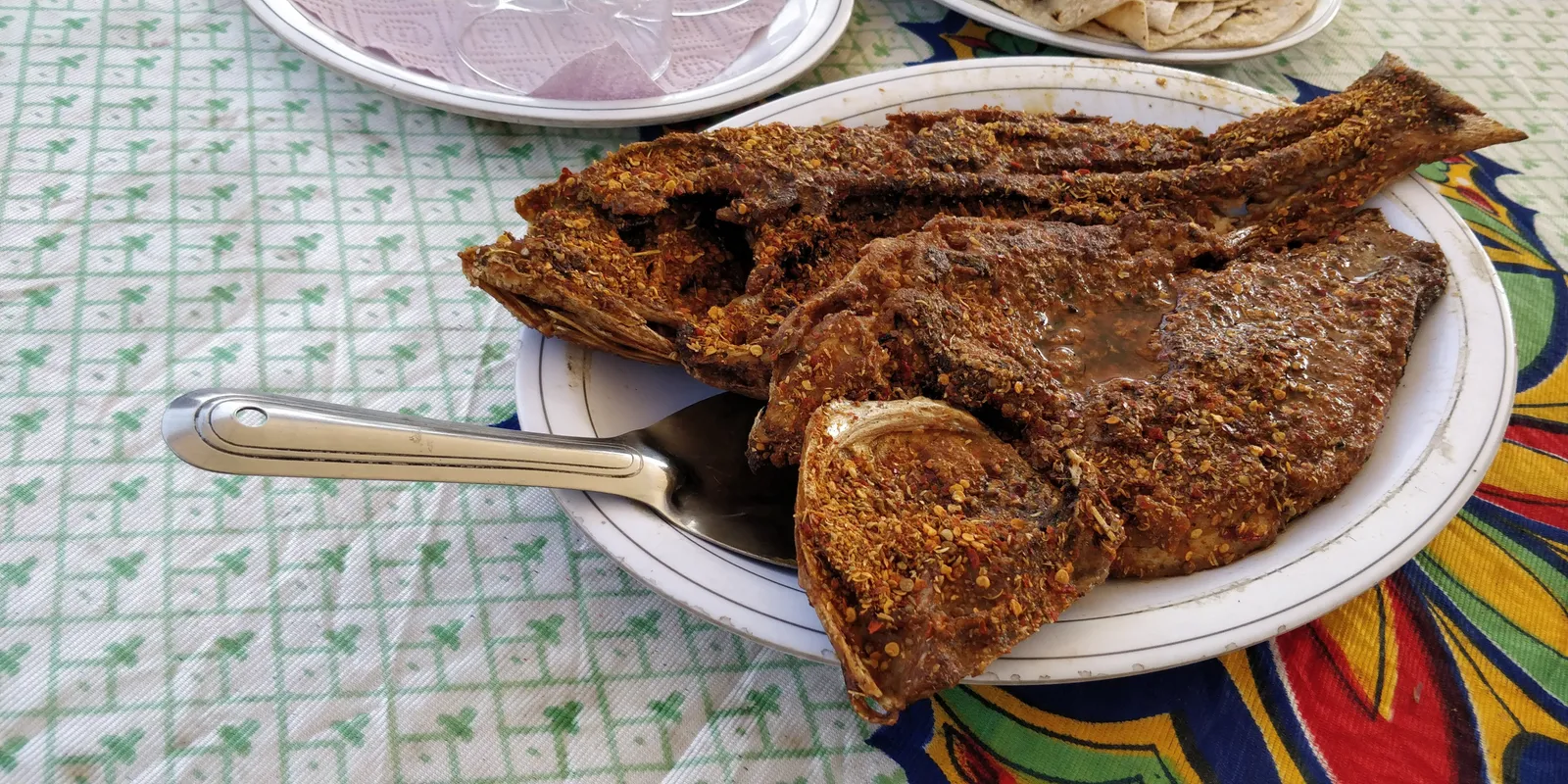
For Sindhis, the palla has a different connotation and one that carries memories of food and community as much as it does of the rivers and the land that was once their home.
BY SHRADHA SHAHANI
Back in the 1970s when my father was a teenager, the monsoon heralded the season for ilish or palla. “My mother cooked it Sindhi style as kok palla; she slit the fish and stuffed it generously with a blend of tomatoes, onions, tamarind and spices. The tartness of the paste and the sweet flavors of the fish would come together beautifully,” he reminisced.
Kok palla was always a Sunday lunch affair at my late grandmother’s home. Lunch, because there had to be enough sunlight to not miss a bone while chomping down the fish that was replete with them. And Sunday, because separating each flakey morsel from the bony carcass was a time-consuming process. “But the fish was so delicious that it was every bit worth the effort,” says my father.
After my family fled from Sindh one fateful night, old family recipes featuring the palla or pallo was the closest they could get to the memory of picnics by the river Indus, which once brimmed with the fish.
It’s a known fact that the hilsa is a culinary and cultural heritage for Bengalis on both sides of the border. The process of buying the fish is in itself a ceremony. Usually, the eldest (often a male member) of the family dons a crisp white kurta to visit a fish market, and carefully selects the shiniest and firmest ilish of the day. So sacrosanct is the status of ilish that on Dashami, the fish is even offered to the goddess. The fish has also inspired works of Bengali art, literature and cinema. At weddings and other functions in Bengal, conversation is rarely about how big the diamonds are or how shiny the gold is, but more about how shiny and large the ilish is. While few things are shinier than gold for Sindhis, the palla is still held very dear.
 For Sindhis, the palla has a different connotation and one that carries memories of food and community as much as it does of the rivers and the land that was once their home. And when the community was displaced from Sindh to various parts of the world, palla still remained a constant for many.
For Sindhis, the palla has a different connotation and one that carries memories of food and community as much as it does of the rivers and the land that was once their home. And when the community was displaced from Sindh to various parts of the world, palla still remained a constant for many.
Hilsa’s Sindh connection
The fish, slathered with a tart chutney and grilled on a sigdi, was eaten at picnics and barbeques after a dip in the Indus River in pre-Partition Sindh. The aroma of palla still fills the air at roadside dhabas and restaurants in many parts of the region. Palla is one of the auspicious foods consumed by Sindhis during Shivratri. Across villages of Sindh, the fish is a gift for special occasions and is often presented as a token along with mangoes.
“My late father often spoke about their Sunday picnics by the river—the men would play a match of malakhro (a form of wrestling in Sindh), followed by an invigorating massage. The women would take a dip in the river in a cordoned off area. And then they would all feast on some palla freshly cooked off a sigdi. They absolutely loved their palla,” says Aruna Madnani, founder of Sindhi Culture Foundation.
Every year around monsoon, shoals of hilsa zoom upstream against the current, from the sea to fresh waters of the river to spawn. Legend has it that in the Indus, the palla swims all the way to the 17th-century Zinda Pir, a shrine that sits in the waters of Sukkur (a city in Sindh along the western banks of the Indus), to pay its respects. It’s when the fish reaches the shrine—a place revered by both Hindus and Muslims, that it is rewarded—metamorphosing from a mediocre-tasting blackfish into a shiny, silver one.
The palla is also the blessed fish that the Sindhi deity Jhulelal rides on. It is said that the palla never travels north of Sukkur because it never turns its back on the shrine, as cited in the book Sindh Revisited: A Journey in the Footsteps of Captain Richard Francis Burton by Christopher Ondaatje.
Per the Mohanas, the fisher folk of Sindh, the hilsa’s transformation has a more corporeal reasoning. They feel the fish develops greater flavor as well as a distinct smell as it swims against the current and makes the journey from saline to sweet water
“A cooked palla in Thatta (a district located east of Karachi) tastes like a normal fish, but when you cook palla caught in Jamshoro (a district that lies further upstream) the entire neighborhood would smell its aroma,” fisherman Gul Hassan told Dawn, a Pakistani newspaper.
Hilsa: Caught and cooked the Sindhi way
The palla zips so fast against the river’s currents that it’s almost impossible to catch the fish by routine methods. Back in the 1880s, fishermen in Sindh would float on a large earthenware pot placed under their stomachs. Armed with a small spear and a tall forked pole with a net, explains Thomas Postans’ book Personal Observations on Sindh. The trapped palla would then be drawn, axed and placed in the pot. Today, special nets known as mun, dudi, khas, muno, kacho, pakko are used to catch the palla.

In pre-partition Sindh, one of the most popular ways to cook palla was in a sandpit, lending the fish a smoky, fall-off-the-bone texture. “My grandmother would buy fresh palla from the fishermen, slit it down the back and pour in a little country liquor. Then she would spread chutney on banana leaves and wrap each fish in it. Digging a hole in the hot sand, we would bury the fish…” says the late Sindhi author Gita Simoes in the book Sindh: Stories of a Vanished Homeland by Saaz Aggarwal.
For Adeela Tareen, a teacher from Karachi, palla was part of her childhood spent in Mehar in Dadu district in Sindh. “Stovetops did not exist back then. The fish was stuffed with tomatoes, onions, red chillies, coriander and amchur (mango) powder and either grilled on wood fires or cooked in sandpits. The recipe was kept simple because the fish was so tasty by itself and hardly needed any seasoning,” she says.
For many others, palla was the stuff of delicious barbeques back in another time. “My late father-in-law who lived in a sprawling house would often tell me about their barbeque evenings. The kids would swim in the pool, and then everyone would picnic in the orchards surrounding the home and feast on palla hot off the sigdi,” says Madnani.
For others, there is the exotic Sindhi version of the ceviche. “The Mohanas would coat their pots with lime, place the fish and dip it in water,” says Mohan Gehani, a noted Sindhi scholar, author and poet, who was born in pre-Partition Karachi. The acid in the lime denatured the fish, stripping its opacity and giving it a white-ish color and umami flavors.
The eggs of the hilsa were also a delicacy in Sindh. “The roe is coated in besan with onion and chillies and fried into a crisp pakoda. The same pakodas can be turned into a sabzi when tempered with onions and tomatoes. The preparation is called aani seyal,” says Alka Keswani, who runs the food blog Sindhi Rasoi.
Hilsa: present and future
While palla may no longer be cooked in sandpits, it is still a delicacy and much-loved dish in many parts of Sindh even today. “When we go on road trips from Karachi to Hyderabad (Sindh), we often stop by Al-Manzar, a shack by the river in Jamshoro. We enjoy the cool breeze and palla hot off the grills, or fried so crisp that even your neighbor can hear the crunch,” says Tareen.

Madnani, who visited Sindh in 2018 to trace her roots, says Lakhi Dar, an area in Shikarpur, Sindh, is flanked by shops and restaurants that have some of the best palla. “Palla fry, barbecue, pulao and curry—they have it all.”
Despite its popularity, the numbers of ilish are dwindling in the Indus, and most of the palla in Sindh now is imported from Iran, says Sapna Ajwani, an author who visited Sindh in 2020 for research on her upcoming cookbook. The fish that was caught by the hundreds or even thousands a few decades ago in Sindh is now not even found by the dozen, fishermen say. Overfishing, usage of banned nets such as bollo and gujjo that can injure fish and the building of dams are just some of the many reasons the palla is not found easily anymore.
It’s not just Sindh, but parts of India as well. Due to its high demand, especially during festivities, the fish is sold for a whopping Rs1800 to Rs2500/kg in West Bengal. Back home in Mumbai, the fish is priced between Rs2500 to Rs3000/kg.
Who knows, someday palla will be as prized a possession as gold, even for Sindhis.
_________________________
Courtesy: Sindhi Samachar (February 2023 issue) and CN Traveler (Published on September 21, 2022)